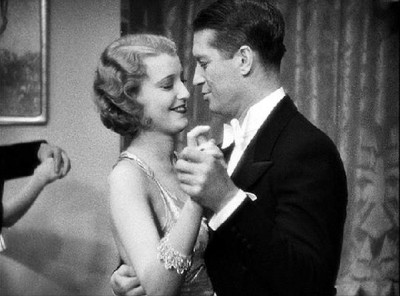
Last week I was talking to screenwriter Terry Curtis Fox who told me that he’d screened Ernst Lubitsch’s Trouble in Paradise (1932) for his screenwriting class at WCU. Considering that a lot of young people think of Quentin Tarantino as one of the “old masters” (hey, he dates back to the ‘90s), Terry reasonably spent the entire movie wondering if he’d made a mistake in choosing this title. He needn’t have. The class burst into applause at the end of this very old movie. Its style and wit — a brilliant screenplay by Samson Raphaelson, scintillating performances from Miriam Hopkins, Herbert Marshall, Kay Francis, Charlie Ruggles and Edward Everett Horton, and master filmmaker Lubitsch’s dazzling direction — bridged the 76 years separating the film from its youthful viewers. As is so often the case, it’s strictly a question of getting people to watch — something more easily accomplished in a captive audience setting.
It was not always so. Back in the mid-1970s Trouble in Paradise played to a packed, 300-iseat auditorium at Florida State University. Around that same time, I saw screenings of the Marx Brothers in A Night at the Opera (1935) and A Day at the Races (1937) where people faced with sold-out shows rushed the doors and sat in the aisles. In those pre-home video days, this was often the only way you could see a lot of these films. Two of my more intrepid friends and I braved the University of South Florida’s “MGM Film Festival” — 16 feature films (along with Laurel and Hardy shorts and Betty Boop cartoons) from the 1930s shown between 7 p.m. Friday and 3 p.m. Sunday. Talk about an endurance test!
So what changed? It’s certainly not just the fact that the movies in question are now 30 years older. The film styles of the 1930s — the whole world of the 30s — were just as foreign to younger viewers in the 1970s as they are to the kids of today. It’s partly generational and mind-set. A large part of the appeal of these old films was likely their relative freshness and often anti-authority quality, especially for those of us whose first moviegoing experiences were with “well-crafted” Hollywood films from the late ‘50s and early ‘60s — much of which could charitably be described as having a stick up its bum. More of the blame frankly falls on home video, which all but killed off most theatrical and college showings in the bargain. The irony is that home video also made — and continues to make — more movies available than ever.
A prime example landed in my mailbox this morning — Eclipse’s release of The Lubitsch Musicals, a four-film set comprised of Lubitsch’s The Love Parade (1929), Monte Carlo (1930), The Smiling Lieutenant (1931) and One Hour with You (1932). As a young man interested in film, most of these films were just titles to me — movies tantalizingly raved about in the pages of books about films that you weren’t likely to ever see. If you lived in New York or L.A. you might see The Love Parade or Monte Carlo, and One Hour with You was at least part of a package sold to TV. The Smiling Lieutenant? Forget that one, it was then thought to be a lost movie.
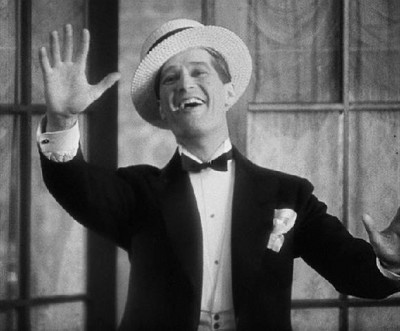
But here we are — all four films sitting in a nice little package on my desk. (I could — and will — complain that they didn’t use the UCLA restored print of One Hour with You, which was tinted — blue for night scenes, amber for night interiors — and had exit music, but that’s a reasonably minor quibble.) Put these together with Criterion’s single disc release of Trouble in Paradise and Universal’s Gary Cooper Collection, which contains Lubitsch’s Design for Living (1933), and you’ve got almost the entire run of films from Lubitsch’s richest period (1929-1933) right at your fingertips. (Lubitsch’s other 1932 release Broken Lullably — an anti-war drama that was never very popular — is all that’s missing, and without a big star or a genre tie-in, it’s likely to remain that way.) It’s a crash course in the works of one of the giants of film — a director whose name was once as much a household word as Spielberg’s is today — just waiting for discovery or rediscovery.
Should you undertake such an expedition into Lubitschiana, you’ll find a treasure trove of comedy, music, surprisingly frank sexuality, social satire and cinematic creativity from the early days of sound — an era often marked by the clunkiness inherent in adapting to a new medium. Lubitsch — along with a few others like Rouben Mamoulian, Josef von Sternberg, James Whale, Roland West, Harry D’Abbadie D’Arrast, William Dieterle and the long-forgotten F. Richard Jones — was rare in that the challenge of the talkies made him more rather than less creative. While some froze (quite literally to judge by their films) at the challenges of sound, Lubitsch saw it as a new tool to make his films.
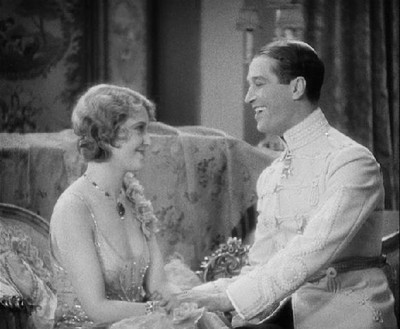
If his first sound film, The Love Parade, seems a little stilted today. It’s less the cinematic technique than the decision to weigh the movie down with a pair of second leads — Lupino Lane and Lillian Roth — to act as comic counterpoint to the real leads, Maurice Chevalier and Jeanette MacDonald, neither of whom needed any help in the comedy department. This, however, was a hangover from musical theater of the era where the romantic leads played it straight and the comedy was handled by someone else. While supporting players continued to be important in Lubitsch’s films, he never repeated this awkward structure.
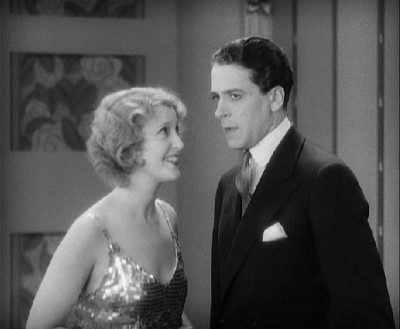
Much smoother is Monte Carlo, though it suffers a little by replacing Chevalier with Jack Buchanan, who is comparatively lackluster (most people are lackluster next to the young Chevalier). By way of compensation, there’s a sophisticated comedy plot, one of MacDonald’s best performances and the sly wit of Lubitsch. The songs are mostly pretty good—with “Always in All Ways” and, especially, “Beyond the Blue Horizon” being a lot more than pretty good. It’s also one of those rarest of musicals in that it deliberately pokes fun at the conventions of the genre. Cinematically thrilling as the presentation of “Beyond the Blue Horizon” is, it also spoofs itself with its singing peasants and invites the viewer to laugh at its absurdity. Late in the film, the opera that mirrors the film’s plot is referred to as “a silly story, only possible with music,” and that is a pretty fair description of the film itself.
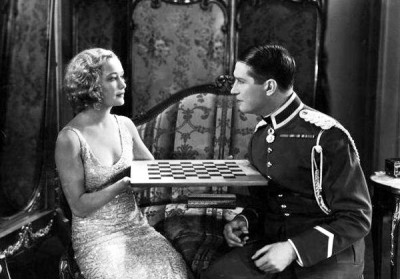
Better still is The Smiling Lieutenant, which teams Chevalier with both Miriam Hopkins and Claudette Colbert. It’s funny, racy, stylish and sexy — with maybe just a little more heart than you find in most Lubitsch films. It tells the tale of Austrian military officer Niki (Chevalier) making the mistake of winking across a street at his girlfriend Franzi (Claudette Colbert) just as the carriage bearing Princess Anna (Miriam Hopkins) of neighboring Flausenthurm passes by. She is incensed, but when his subsequent attempt at an explanation makes her think he was flirting with her, she becomes smitten and, before he knows it, he’s married to the princess — a union he refuses to consummate. So while the poor princess spends her evenings playing checkers with her father (George Barbier), Niki continues seeing Franzi. How all this works out is sophisticated comedy at its finest. Its biggest problem is that the songs aren’t especially memorable (the best is probably Hopkins and Colbert’s duet, “Jazz Up Your Lingere”). It is the only of Chevalier’s early films not to produce a single hit song.
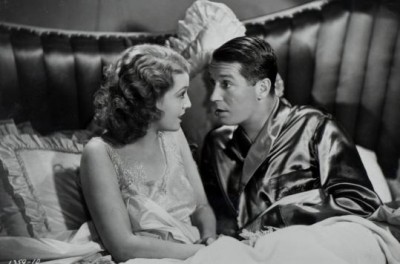
Reteaming Chevalier and MacDonald in One Hour with You — a sound (and vastly superior( reworking of his 1924 The Marriage Circle — Lubitsch left the realm of mythical Ruritanian kingdoms and bickering nobility that had marked his first talkies and moved to a more realistic modern Paris with a comic story where almost everyone wants to sleep with someone they probably oughtn’t. If he hadn’t followed this up with Trouble in Paradise, it might have been his masterpiece. As it stands it’s still in the running. It’s exactly the sort of ultra-sophisticated comedy for which the filmmaker was famous. It’s also the kind of film that couldn’t have been made two years later once the production code went into force. You see, the code folks had this idea that adultery simply could not be funny. Lubitsch et cie, of course, thought otherwise and proved it.
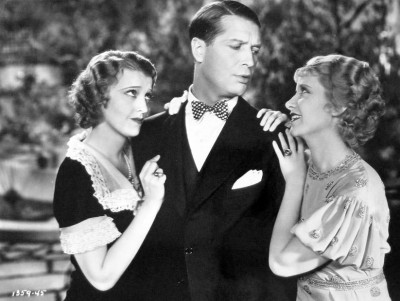
One Hour With You departs from Lubitsch’s earlier musical comedies in that it doesn’t deal with Ruritanian royalty, but takes place in a very modern Paris and focuses on Dr. Andre Bertier (Chevalier) and his wife Colette (MacDonald). They are a happily—and apparently very sexually active—married couple whom we first meet “making out” on a bench in the park. Trouble arises when Colette’s “best friend” Mitzi (Genevieve Tobin)—unhappily married to the equally unhappy Swiss Professor Olivier (Roland Young)—decides she at least wants a dalliance with Andre. Since Andre is a movie Frenchman—and Maurice Chevalier at that—he’s susceptible, despite his best efforts not to be. And while that might only be a little Gallic galavanting under most conditions, Prof. Olivier is in want of divorce evidence (“In Switzerland, they have a very curious law—if a man shoots his wife, they put him in jail”).
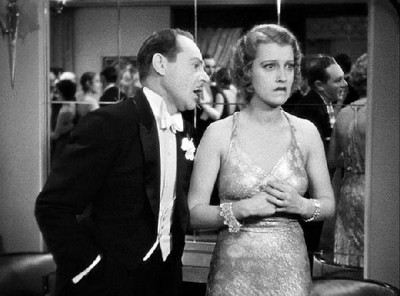
Apart from the fact that Colette also has an admirer—in the form of comedic Charlie Ruggles—that’s about all the plot there is. But the film transmutes it into pure movie gold of the most sophisticated kind. There are several unusual touches—not the least of which finds Chevalier addressing the audience on occasion. (This device is actually replicated on the American—though not the French—commercial records made in connection with the films.) Chevalier had sung directly to the audience in Lubitsch’s The Love Parade, but this was the first time he’d actually talked to them. t’s fast-paced, witty, splendidly played, boasts at least three good songs—“One Hour With You,” “Oh! That Mitzi” and “What Would You Do?”—and a couple of passable ones, apart from indulging in the brief-lived fad for rhymed dialogue with “musical interpolations” on one occasion.
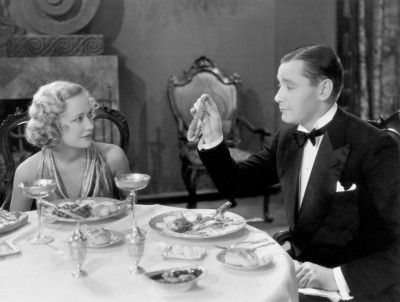
As if to make it up to Miriam Hopkins for having her play the rather mousey, sexually awkward Princess Anna in The Smiling Lieutenant, Lubitsch promoted her to star billing and the sexiest role of her career in Trouble in Paradise. Hopkins plays pickpocket and con-artist Lily, who falls in love with Herbert Marshall’s more accomplished thief Gaston Monescu (“The man who walked into the Bank of Constantinople and walked out with the Bank of Constantinople”), whereupon the two of them set out to fleece perfume heiress, Mariette Colet (Kay Francis). The results are the finest film of his career — a movie that comes as close to perfection as possible. It’s also his first comedy talkie that wasn’t a musical (it almost might be one with its interpolated W. Franke Harling score), there’s not a false note in the film. It may just be the most sophisticated comedy ever made.
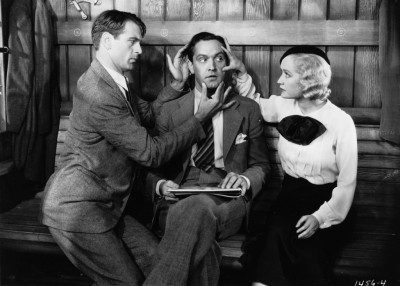
Anything would likely fall short of Trouble in Paradise and Lubitsch’s Design for Living does — but only just. The film is notorious for the fact that screenwriter Ben Hecht bragged that he only used one line (the toast “for the good of our immortal souls”) of the dialogue from the Noel Coward play on which it was based, but there’s no denying that his script sparkles and at least manages to suggest the menage a trois of the three main characters (Fredric March, Gary Cooper, Miriam Hopkins) without arousing the ire of the censors. In many ways, it’s an extension of the triangle of Hopkins, Marshall and Kay Francis from Trouble in Paradise — only taken to its logical, if not exactly “moral” conclusion.
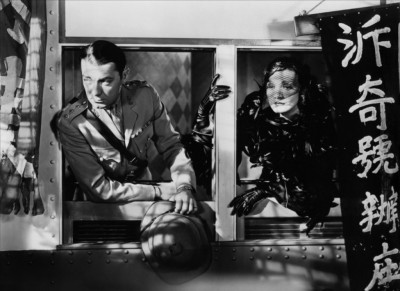
Undertaking Lubitsch in this manner is especially rewarding if the films are watched in sequence, allowing the viewer to appreciate the development of an artist at the height of his creative powers. Such things don’t begin and end with Lubitsch. This same approach can be taken with Josef von Sternberg, since nearly all of his major sound films are also available from The Blue Angel (1930) through The Devil Is a Woman (1935). All that’s missing is his not wholly successful adaptation of Theodore Dreiser’s An American Tragedy (1931), Dishonored (1931) and, unfortunately, his best film, Shanghai Express (1932), though the latter two were released on VHS and might be tracked down.
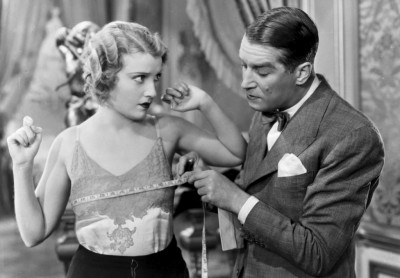
There’s more. All of Preston Sturges’ major films are on DVD. Watching his Sullivan’s Travels (1941) and The Palm Beach Story (1942) is a reminder of just how brilliant comedy writing can be. All but one of the key works of Rouben Mamoulian are out there, including his startling version of Dr. Jekyll and Mr. Hyde (1931) and his Chevalier-MacDonald musical comedy Love Me Tonight (1932), which is perhaps the most incredible outburst of cinematic innovation ever. The list goes on and on and on. I’ve only scratched the surface.
It’s really up to you. There’s an entire education in and of movies just waiting to be explored available to us today — the likes of which has never been so accessible. Yet, it seems that “cinematic literacy” is probably lower today than it was 30 years ago. We’re lucky locally in that we have two lively venues — World Cinema and the Hendersonville Film Society — that bring us a nice weekly selection of classic and cult movies. And, of course, the library provides us with themed selections of films a few times a year. This is great, because it affords the chance to see films as they were meant to be seen — with an audience. But there’s so much more than even these worthy institutions can encompass. The solution? Get out there and rent or buy or borrow. Chances are you’ll be more than pleasantly surprised.
Note: Since this was written both Dishonored and Shanghai Express have been made available in a two film set from Universal and TCM. And of course the Asheville Film Society and the Thursday Horror Picture Show have been added to the roster of repertory groups.



This week people will undoubtedly think I look like Maurice Chevalier…or maybe Jeanette MacDonald.
Ken, now you talking my type of movies. Thanks for an excellent writeup. I’d like to see the Fine Arts or Brew and View run classics like these. I do have a thing for Jeanette MacDonald, so I will never mistake you for her. :)
There are some sizable problems to the Fine Arts or Asheville Pizza doing this — apart from drawing a large enough crowd to support such an undertaking. It would be very hard to find 35mm prints of most titles and impossible to find 35mm prints that could be run on a platter system. So chances are the movies would have to be run from DVD. That’s not as bad as it sounds, though, depending on the source material. I saw the DVD of Richard Lester’s THE KNACK…AND HOW TO GET IT projected just last night and it was razor sharp. That’s not likely to be as true with films from the 1930s, but they’d still be very watchable. Still, the rights clearances for a commercial venue would probably be restrictive.
You may want to make note of the fact that in May I’m slated to screen three Busby Berkeley musicals on successive Monday nights — WHOOPEE! (1930), GOLDDIGGERS OF 1933 (1933), and THE GANG’S ALL HERE (1943). More on this nearer the time.
The following link is a great recent article on the difficulties facing the showing of classic films.
http://www.sfgate.com/cgi-bin/article.cgi?file=/c/a/2008/02/11/MNVVURG40.DTL
marc
Interesting article and it contains a lot of home truths. It’s very true that a lot of the fare in question was shown from often beat-up 16mm prints, but no one seemed to mind then — at least we were able to see them.
We’re very spoiled by DVD — so spoiled in fact that we’ve done ourselves a damage now and again. For instance, Criterion was planning to release Sternberg’s SHANGHAI EXPRESS (see article above) on DVD as a follow-up to their release of THE SCARLET EMPRESS, but there was so much bitching and moaning over how grainy SCARLET EMPRESS was that they nixed the whole project. Not that some of the kvetching isn’t deserved — as witness Universal and Tod Browning’s DRACULA. First, they release the film as a stand-alone title and use the print that the music had been stripped from for that ghastly Philip Glass score someone got the bright idea of slapping on the film. Problem was they forgot to put all the music back for the DVD. Plus, it didn’t look all that hot. So then they put it out in a “Dracula” set, at which time they somehow got ahold of an old TV print that lacked the restoration work done on some of the soundtrack and looked like hell. Come 2006 and they put out the “75th Anniversary” edition, which was a significant improvement over the last two — which basically meant it looked as good as the laserdisc from 15 or so years ago. Now there’s talk of a possible FOURTH DVD release — if it turns out to be true that a print with additional footage (notably the long missing curtain speech) has really been found in the Library of Congress.
But I digress. One of the main points of the article is that movies were meant to be a communal experience. Really unarguable — at least with a good audience. I’ve seen some bad audiences during the college and rep house days, but I’ve also seen the best audiences then. There’s nothing to equal the sight of a bunch of just too cool college kids watching a film like King Vidor’s THE CHAMP (1931) and seeing them go absolutely wild when the Champ wins — and then seeing them reduced to wiping their eyes two minutes later when he dies.
I do believe that digital — and I expect most theaters to be digital within five years (a resuable hard-drive that weighs about a pound vs. a $4000 35mm print that weighs a ton?) — will make a difference. The issue of reel-to-reel projection and archival prints will be moot.
Asheville’s a little unusual in being able to draw a certain amount of people to older movies. Marc knows this from Walk-in Theater. World Cinema is very often at full capacity. Neither of these, of course, are commercial venues. That makes a difference. That said — and these are special in a different way — the film festival did close to capacity on THE MUSIC LOVERS, WOMEN IN LOVE and MAHLER in 2005 (and even respectable no’s on the midnight shows, as well as solid business on TOMMY, which was $20 a ticket, but then that one came with Ken Russell in attendance and an after-party). BULLETS OVER BROADWAY and BOUND did the same in 2006, and all three Tess Harper films were near capacity (LOGGERHEADS may have been capacity) in 2007. It also should be noted — as the article mentions — that in some cases (in all cases with the Ken Russell films) the films were shown from DVD, which is coming to be a mainstay for this sort of thing. Good DVD projection IS acceptable on the big screen and the communal experience is, of course, identical.
Ken, let us know when you are going to screen these flicks, and where. I want to attend. I love the classics.
The films will be screened on Mondays in May (I’ve forgotten the exact dates) in Lord Auditorium at the downtown library. I’ll review them in the paper (the issue of the week they run) and will do a piece here on movie musicals the Friday before they start.
I hope a lot of people will attend — especially those who think they don’t like “old movies” in the case of GOLDDIGGERS OF 1933, a film I’ve used for years to show to people who are resistant to anything not made in the last ten years — and it usually surprises them.
I’m glad they’re being screened in May – my wife will be back from UCF (Orlando) the end of April and I know she’ll want to see them (I do also, but the scheduling’s harder)
In defense of the DVD, I’ve gotten to see a lot of foreign films I would’ve otherwise missed (but not dubbed – I would much rather hear the actors speaking while reading subtitles). Of course, I’ve also seen some real stinkers I should’ve missed, but the titles looked interesting (‘Vampires vs Zombies’, what was I thinking?)
~David
DVDs don’t really need defending. They’re a wonderful thing. They simply don’t take the place of seeing a film in something like a theater setting. And DVD’s — at least well-authored ones — are able to be projected to that end with increasingly good results.
If you’ve ever had the experience of trying to do an in-depth analysis of a movie from a 16mm print or even from a VHS tape, you fully appreciate the DVD format with its ability to be paused and quickly searched.
Of course, in general, it’s the availability of titles that makes the format so appealing. That said, there are still some strange omissions in availability. One of the films in the musicals screenings — WHOOPEE! — was available on VHS and laserdisc (the latter is the source of the copy being shown), but has never made it to DVD. In fact, there’s a healthy list of such titles.
I like the old ones too Ken. Got a good dvd collection of classic movies. But there is nothing like sitting in a theater, or a roomful, of others and watching together. Where are you going to show these movies you mentioned?
According to the latest information I have, they’ll be on consecutive Mondays — May 5, 12, 19 — at 6 p.m. and will be in Lord Auditorium at Pack Library.